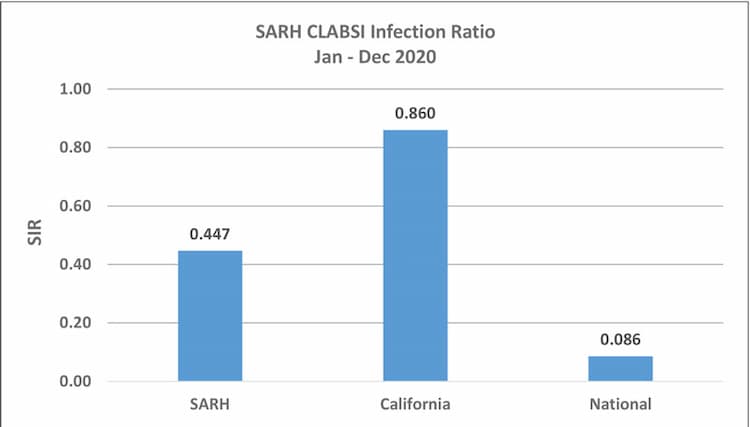
Central Line Associated Blood Stream Infection (CLABSI)
What are we measuring and why?
A central line is often necessary to receive fluids and medication. Sometimes patients can develop infections associated with these catheters, especially if they have a weak immune system or have chronic diseases. To reduce the risk of infection, it is important to maintain the cleanliness of the line and insertion site as well as removing the line as soon as possible.

How do we measure?
What are we doing to improve?
What can you do?
Patients are encouraged to remind their care team to take necessary precautions to reduce risk of infection. Patients and family members should also feel empowered to ask about the necessity of a central line to assure its appropriateness and that it is removed as soon as possible.
Appropriate hand hygiene by the care team, patient, and visitors is an important part of infection prevention.
